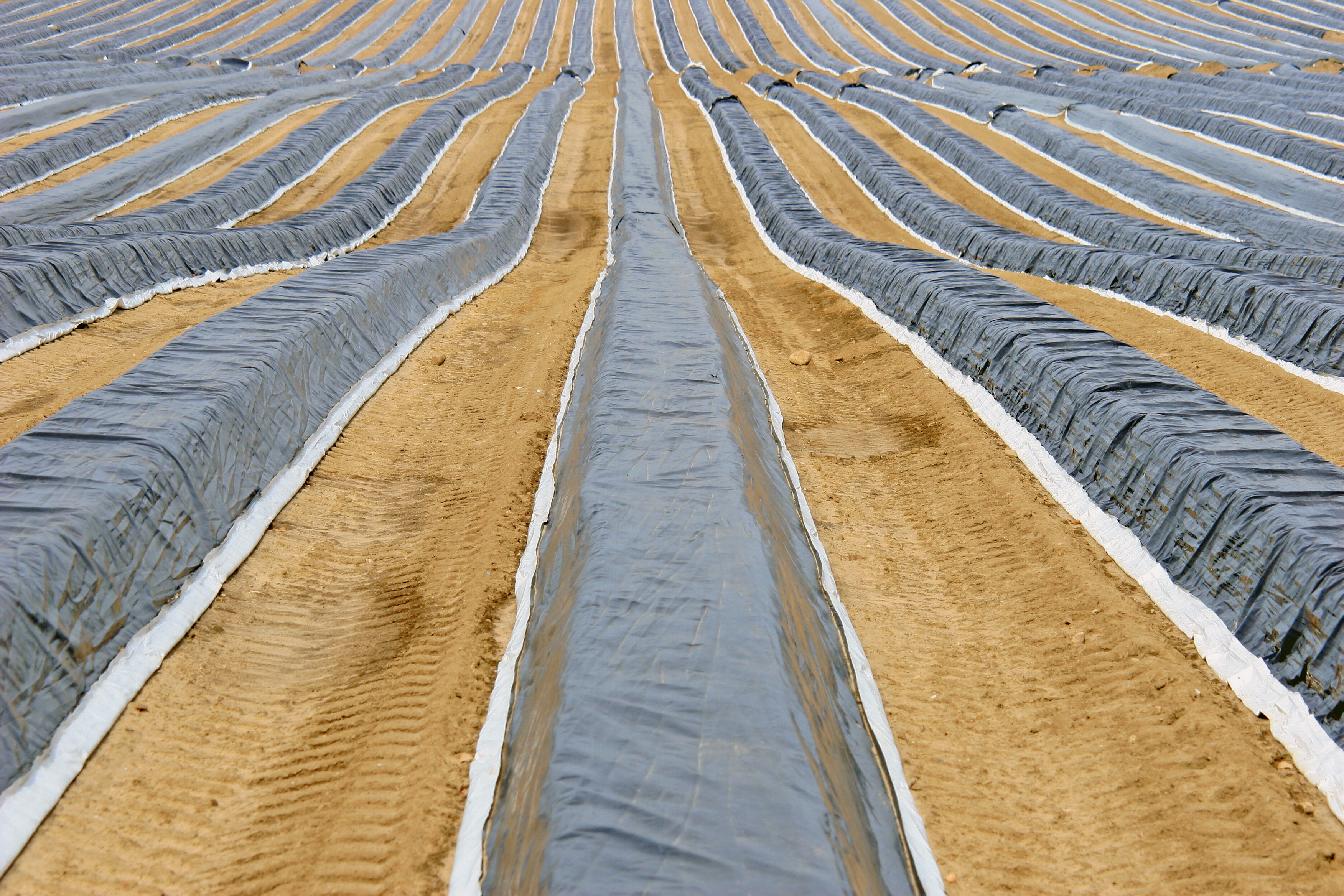| This guidance sheet forms part of a series of guidance sheets on preventing and managing offensive odours, and should be read in conjunction with EPA Victoria’s Odour Guidance for Industry webpage. |

Figure 1 – an example of a tarp being used to contain odour
Description
Odour covers are physical barriers made of solid (e.g. tarps, plastic domes etc.), permeable (e.g. PTFE), or biological (e.g. finished compost) material. Covers can sometimes contain an odour extraction compound within them and they can be placed over odorous sources such as stockpiles, ponds, tanks, or lagoons to reduce odour emissions from these sources.
Type of control
Physical.
When you would use this?
If your business has potentially odorous sources such as ponds, lagoons, stockpiles, or tanks then odour covers can be used to control odour.
Suitable for: odours originating or produced by stockpiles and other static sources, typically used outdoors.
Industries that would use this: businesses storing chemicals and liquids, agriculture, industries with solid stockpiles (composts, landfills), industries with water bodies like ponds, tanks, lagoons, reservoirs etc.
Details and considerations
Odour covers can be a cost-effective way to manage potential odour at your site or business. However, it is important to understand which type of odour cover is right for you.
- The material you use as a cover will vary depending on the type of odour you produce, or the type of stockpile you cover (solid, liquid, etc.).
- How you install odour covers will vary depending on the odour source you wish to cover (anaerobic lagoon vs manure stockpile for instance). You may need to consider professional installation which may incur extra costs.
- Stockpile sizes, and odour production levels can change. Your odour cover should account for this.
- Some stockpiles can produce excess gas. If your stockpiles are at risk of producing gases, your odour cover will need to be able to flex with this production or vent the gas safely.
Odour covers are a fit for purpose solution to your odour mitigation and come in many shapes and sizes.
Gas collection covers
- Best suited for odorous stockpiles which produce excess amounts of gas, or lagoons with fluctuating levels.
- These need to be flexible to account for fluctuating lagoon levels or if there is a backlog of gas to be processed.
- There also needs to be an extraction and treatment system to manage the odorous air captured by the covers.
Geomembrane/floating covers
- Best suited for keeping odour within wastewater and manure ponds.
- In this style of cover, tension should to be maintained at all times.
- Ballast lines bordered by floats may require professional instalment.
PVC (polyvinyl chloride), reinforced PVC, woven polyethylene covers
- General purpose covers that are suited for many different industries.
- Can be used for a variety of applications such as:
- granary covers
- husbandry covers
- irrigation channel liners/covers
- piggery covers
- wine & viticulture activity covers.
Solid fibreglass covers
- Best suited for odorous stockpiles in static tanks, or those that do not need to expand or contract with fluctuating levels.
- These may need to be plumbed with an exhaust fan and treatment/dispersal controls.
Fibreglass reinforced plastic (GRP) covers
- General purpose covers that are suited for many different industries.
- These can be made flexibly to suit many different purposes.
- Generally used in the waste water/sewage treatment/chemical storage industries.
PTFE (polytetrafluroethylene) covers
- Primarily used in composting industry but could also be used for other organic waste stockpiles.
- They are designed with a pore size that allows for the transport of air, water, and carbon dioxide but traps larger more odorous compounds.
Further information
| Australian Standard |
Title |
| AS4323 |
Stationary source emissions selection of sampling positions |